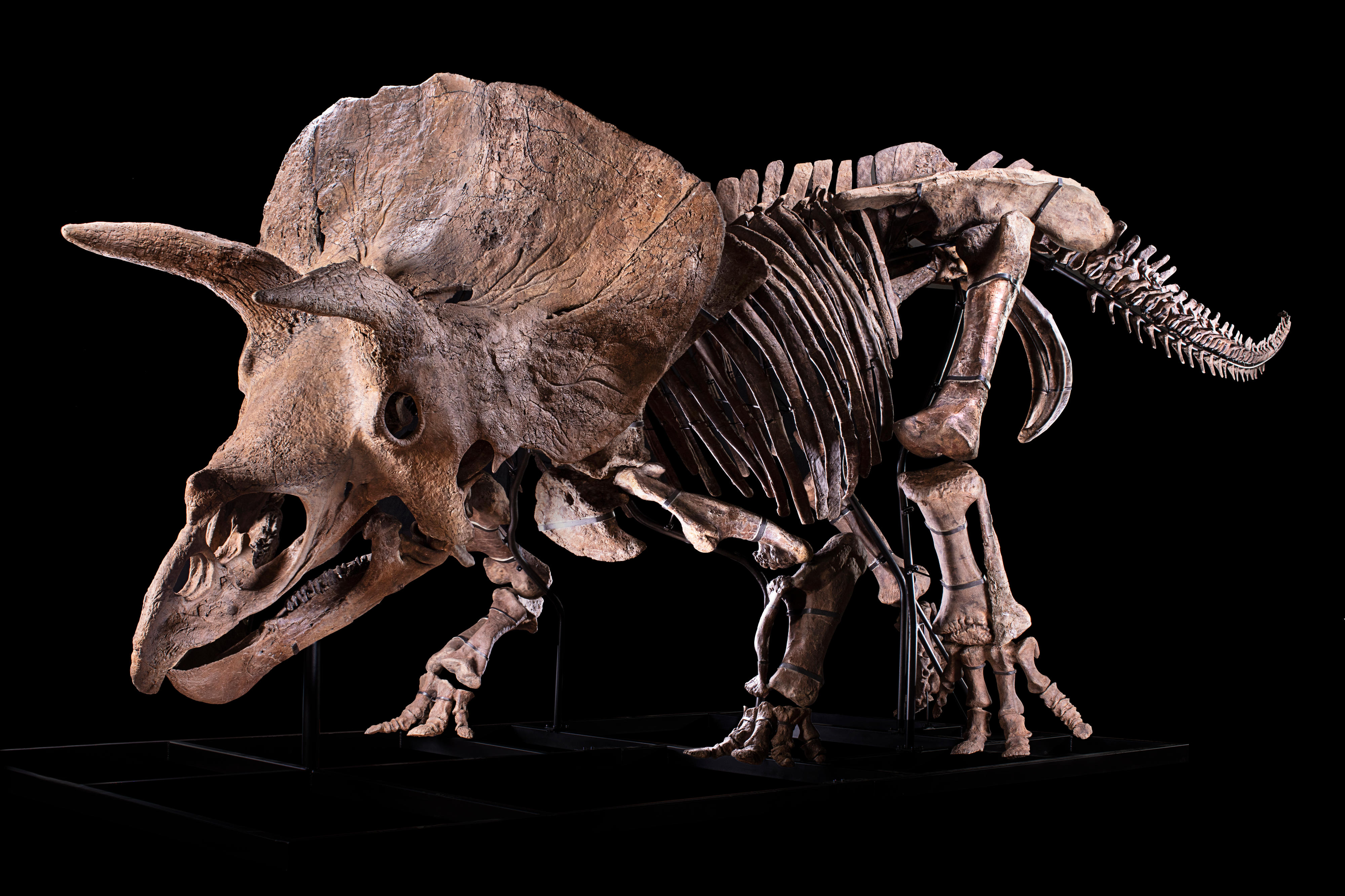Media release
From:
Palaeontology: ‘Big John’ provides evidence of triceratops combat injuries *IMAGES*
The fossilised remains of the triceratops specimen known as ‘Big John’ display injuries to the skull that may have occurred during combat with another triceratops, according to new research published in Scientific Reports.
Triceratops (Triceratops horridus) is a species of horned dinosaurs characterized by its large neck frill formed from extended patietal and squamosal skull bones. It has been suggested that this bony frill served as protection against injuries from other triceratops during fights.
Ruggero D’Anastasio and colleagues examined the triceratops specimen known as ‘Big John’, so named for its large size, which was discovered in 2014 in the Upper Cretaceous Hell Creek Formation, Montana, USA. They report the presence of a keyhole-shaped opening (a fenestra) in the right squamosal bone. The bone surface around the fenestra is irregular and features plaque-like deposits of bone, which could have resulted from inflammation (possibly from infection). The authors analysed samples taken from the larger margin of the fenestra, which reveal that the bone tissue around the fenestra is porous with lots of blood vessels compared to bone tissue further from the fenestra, suggesting that this was newly formed bone. The bone also showed signs of remodelling, as demonstrated by the presence of little pits known as Howship lacunae.
Together, these features indicate that the fenestra was caused by a traumatic injury but that the bone was healing at the time of Big John’s death. The authors suggest that the injury was caused by the horn of another triceratops, and occurred at least six months before Big John’s death. Based on these findings, the mechanisms underlying the healing process in dinosaurs appears to be similar to that in mammals.
Multimedia







 International
International



